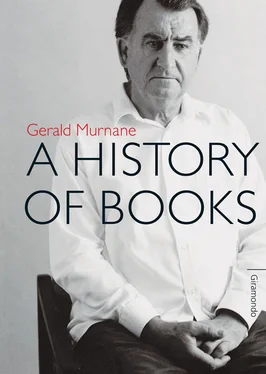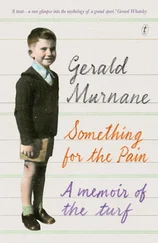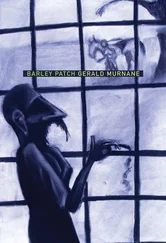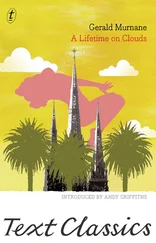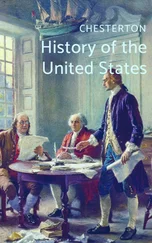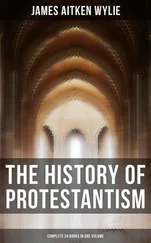The first image mentioned in this section of this work of fiction is an image in the mind of a young man of a young woman, hardly more than a girl. That image first appeared in the mind of the young man while he was reading one of the many works of fiction that he read in the hope of learning how to write a work of fiction that he had planned for a long time to write but had not yet begun to write. The young man had read the work mentioned because he had read previously that the work was an outstanding example of a so-called school of so-called realist writing that had flourished in the United States of America between the two World Wars. The young man had begun to read the work of fiction mentioned first in order to learn how he himself ought to write if he should choose to become a realist writer; second to learn how a certain fictional young man had thought and felt in a fictional suburb of a fictional Chicago twenty years before the young man had been born; and third to surmise how some or another actual young man might actually have thought and felt at the time mentioned.
The young man mentioned was an undiscerning reader who believed that any book published in the United States of America must have been at least as meritorious as any book published in his own country. Even so, the young man had begun to be uneasy while he was reading the work of fiction mentioned. He had hoped, when he had begun reading, to see in his mind image after image of young persons living out their lives in an image-Chicago. He had seen, at first, a number of such images, but had then begun to see in his mind an image of an author with close-cropped hair and horn-rimmed spectacles who sat in front of a typewriter by means of which he put onto paper word after word and sentence after sentence intended to bring to the mind of reader after reader seeming-image after seeming-image of seeming-reality.
An image of a room lit by afternoon sunlight appeared in the mind of a man aged about forty years. The man was reading a book in which were published interviews with well-known American or European writers of fiction and of poetry. The image-room was filled with image-furniture such as would have been fashionable thirty years before the birth of the reading man. The most noticeable piece of image-furniture was a glass-fronted image-bookcase from which the man had taken down or had looked into or had read one after another book during several summer holidays in his boyhood. The image-book that he remembered most clearly had been illustrated with reproductions of famous paintings, one of which was a painting of a group of naked young women.
The man aged about forty years was reading the book mentioned in the hope of becoming more skilled at writing fiction. During many of the previous twenty years, the man had written several short works of fiction and had tried to have them published. Two years before he had begun to read the book mentioned, the man had seen first one and then a second of his short works published, each in a different literary magazine. During the previous two years, however, the man’s first novel, which he had worked at intermittently for fifteen years, had been rejected by three publishers. After the third of these rejections, the man had applied for entry as a mature age student to a course in the arts faculty of a so-called college of advanced education in a distant suburb of the city where he lived. The course mentioned included several units in fiction writing taught by a writer whose novels had won prestigious literary awards. One of the writer’s novels, the theme of which, so to speak, had been the confrontation between Indigenous people and pastoralists, had been turned into the script for a successful film. While the man was waiting to learn whether or not he had been accepted into the course mentioned, he had bought the book mentioned much earlier and had begun to read it. When the image of the sunlit room had appeared in the man’s mind, as was mentioned earlier, he had been reading a report of an interview with a famous author of fiction in the French language.
If a certain man aged more than sixty years had set out to report every appearance in the minds of certain younger men of an image of a certain sunlit room, then the man aged more than sixty years would have reported that the image of the sunlit room had first appeared in the mind of a young man aged about twenty-five years while he was reading a book of fiction given to him by a young woman who had previously been his girlfriend. The young man had persuaded the young woman to be his girlfriend after he had been for several years without a girlfriend and soon after he had decided not to approach any young woman in the future unless she had been, or was still, a member of the church that he had formerly belonged to. The young woman was a member of the church mentioned and had spent her first seventeen years in a small town in a mountainous district north-east of Melbourne. The young man often saw her image in his mind against a background of fold after fold of dark-blue image-hills reaching back from the suburbs of his native city towards mountainous districts that he had never visited. The young woman had been the girlfriend of the young man for several months before she told him that they should no longer see each other. At their last meeting, the young woman had given the young man as a present an English translation of a book by a famous writer of fiction in the French language. The young man had read the book with care, hoping to learn from it some or another message from the young woman. Fifteen years later, when he was reading the book of interviews mentioned earlier, and when he and the young woman had been married for thirteen years, the man who had been the young man supposed that he had been given the book only because the famous writer had remained throughout his life a member of the church mentioned earlier and that the young woman had admired him for this. When the man was aged about forty years, he recalled from his having read the book mentioned only an image of a man aged perhaps sixty years who was writing at an image-table near an image-bookcase in an image-room filled with image-afternoon-sunlight. The image-man was writing to his image-wife. He and she had lived for many years in separate image-suites of the same image-house and had communicated only by means of image-pages of image-handwriting.
The man who is the subject of these paragraphs never afterwards considered that he had become a more capable writer of fiction as a result of his having read, at about the age of forty years, the published report of the interview with the famous writer in the French language. Even so, the man still remembered, more than twenty years after he had read the report, an image that had appeared to him while he read. The image was of a room filled with afternoon sunlight. Noticeable in the image-room were a glass-fronted image-bookcase and an image-table where a famous image-man, aged perhaps sixty years and more, sat writing. The remembering man could remember, at the age of sixty and more years, hardly any of the words in the report of the interview mentioned but he remembered still a statement to the effect that all the fiction written by the famous writer was part of his effort to rediscover the faraway world of his Jansenist, provincial childhood.
In the mind of a man aged somewhat more than sixty years, an image appeared of an image of rays of sunlight appearing in the mind of a young man of somewhat more than twenty years. When the image had appeared in the mind of the younger man, he was reading a work of fiction by a much-praised author aged somewhat more than thirty years who lived in the United States of America. When the image of rays had appeared in his mind, the young man was sitting in the lounge room of a spacious flat that he rented in an outer suburb of Melbourne. The time of day was late afternoon, and rays of sunlight shone through the large windows of the spacious flat and onto some of the many illustrations that the young man had cut from magazines or from dust jackets and had fastened to the walls of the lounge room. Each illustration was of a writer of fiction or of poetry, and one of the writers was the much-praised author mentioned above. The author wore a shirt with stripes of many colours and had a cigar in his mouth.
Читать дальше
